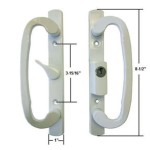How To Lay A Patio On Uneven Ground
Laying a patio can significantly enhance outdoor living spaces. When the ground is uneven, the project requires careful planning and execution to ensure a stable and aesthetically pleasing result. This article details the necessary steps to successfully lay a patio on uneven ground, covering preparation, leveling techniques, and patio construction.
Planning and Preparation
Before any physical work commences, a comprehensive plan is crucial. This stage involves assessing the existing ground conditions, determining the desired patio size and shape, and selecting appropriate materials. Thorough preparation prevents problems later in the process and ensures a durable and visually consistent patio.
The initial step involves accurately measuring the area where the patio will be located. Mark the perimeter of the patio using stakes and string. These markers will serve as visual guides throughout the excavation and leveling process. It is advisable to slightly overestimate the required area, allowing for minor adjustments during construction.
Evaluating the existing ground is essential. This includes identifying the type of soil present. Clay soil, for instance, retains water and requires different drainage considerations compared to sandy soil. Note any significant slopes, depressions, or obstacles like tree roots. These factors will influence the method used to level the ground and may necessitate additional drainage solutions.
Material selection is a crucial component of the planning phase. Patio materials range from pavers and natural stone to poured concrete. Consider the desired aesthetic, budget, and anticipated usage of the patio. Pavers offer design flexibility and are relatively easy to install, while natural stone provides a unique and durable surface. Concrete is a more permanent option that requires specialized equipment and expertise.
Once the materials are selected, calculate the quantity required. This calculation should account for potential waste and breakage. It is generally recommended to order slightly more materials than initially estimated to avoid delays and ensure color consistency if ordering in batches.
Gather all necessary tools and equipment. Essential tools include a shovel, rake, tamper, spirit level, measuring tape, wheelbarrow, and safety glasses. Depending on the patio material chosen, a paver cutter, concrete mixer (if using concrete), and specialized hand tools may also be required.
Prior to commencing any excavation, check for underground utilities. Contact local utility companies to locate and mark any buried cables, pipes, or wires. This step is critically important for safety and to prevent damage to essential services.
Leveling Uneven Ground
Leveling the ground is the most labor-intensive but also the most critical step in laying a patio on uneven ground. This process involves excavating high spots, filling low spots, and ensuring a consistent level across the entire patio area. The goal is to create a stable and well-drained base for the patio materials.
Begin by removing any vegetation, topsoil, and debris from the marked area. Excavate the ground to a depth sufficient to accommodate the patio base and the paving material. The required depth will vary depending on the type of material and local soil conditions. As a general guideline, excavate at least 6-8 inches deep.
For significantly uneven ground, consider using a laser level or rotary level to establish a consistent grade. These tools provide a highly accurate reference point for leveling the ground. Set the laser level at a desired height and use a grade rod to measure the depth of excavation needed at various points across the patio area.
Begin excavating the high spots, removing soil until the desired level is reached. Use a shovel and wheelbarrow to transport the excavated soil to low-lying areas. Distribute the soil evenly across the low spots, compacting it in layers to prevent settling. A plate compactor can be used for larger areas to ensure thorough compaction.
After filling the low spots, use a rake to smooth the surface and eliminate any significant irregularities. A long, straight board can be used as a screed to further level the ground. Place the board on edge and drag it across the surface, removing excess soil and filling in any remaining depressions. Check the levelness using a spirit level placed on the screed board.
Install a base layer of compacted gravel. This layer provides a stable foundation for the patio and facilitates drainage. The thickness of the gravel base depends on the soil type and anticipated load. A minimum of 4 inches of compacted gravel is generally recommended. Spread the gravel evenly across the excavated area and compact it thoroughly using a plate compactor. Ensure the gravel base follows the established gradient for proper drainage.
Add a layer of sand on top of the compacted gravel. This layer provides a bedding surface for the patio pavers or stones. The sand layer should be approximately 1-2 inches thick. Use a rake to spread the sand evenly and then use a screed board to create a smooth, level surface. Check the levelness using a spirit level. The sand layer should be compacted lightly using a hand tamper.
Laying the Patio Surface
With the base properly prepared and leveled, the final step involves laying the patio surface. The method used will depend on the chosen material, whether pavers, natural stone, or concrete. Accuracy and attention to detail during this stage will determine the overall appearance and longevity of the patio.
If using pavers, begin by laying the first row along a straight edge, such as the string line that marks the perimeter of the patio. Ensure the pavers are aligned accurately and spaced evenly. Tap each paver gently with a rubber mallet to set it firmly into the sand. Use paver spacers to maintain consistent joint widths.
Continue laying the pavers row by row, following the chosen pattern. Check the levelness of each paver using a spirit level. If a paver is uneven, gently lift it, add or remove sand underneath, and re-set it. Be sure to maintain consistent joint widths and alignment throughout the patio.
When using natural stone, the process is similar to laying pavers, but with greater variation due to the irregular shapes and sizes of the stones. Select stones that fit together well and create a visually appealing pattern. Use a chisel and hammer to shape the stones as needed to achieve a tight fit. The natural variation in stone sizes will require more adjustments to the sand bedding layer to maintain a level surface.
For poured concrete patios, construct forms to define the shape and size of the patio. The forms should be securely anchored and properly leveled to ensure the concrete surface is even. Mix the concrete according to the manufacturer's instructions and pour it into the forms. Use a screed board to level the wet concrete and remove excess material. Allow the concrete to cure properly according to the manufacturer's recommendations. This may involve covering the concrete with plastic sheeting to retain moisture.
Once the patio surface is laid, fill the joints between the pavers or stones with polymeric sand. This sand is designed to harden and prevent weeds from growing in the joints. Sweep the polymeric sand into the joints and then use a fine mist of water to activate the hardening process. Follow the manufacturer's instructions carefully to ensure proper application and curing of the polymeric sand.
For concrete patios, apply a sealant to protect the surface from weathering and staining. The sealant will also enhance the appearance of the concrete and make it easier to clean. Choose a sealant that is appropriate for outdoor use and follow the manufacturer's instructions for application.
Inspect the completed patio for any unevenness or imperfections. Correct any minor issues by adjusting the pavers or stones as needed. Ensure the patio surface is stable and drains properly. Add finishing touches such as edging or landscaping to enhance the aesthetic appeal of the patio.

My Garden Is Sloped Can I Still Install A Patio Home Logic

How To Lay Decking On Uneven Ground Pi Gardening

Outdoor Flooring Over Grass Or Dirt Interlocking Tiles

Building A Surface Deck Over An Uneven Concrete Patio

How To Lay A Patio On Concrete Or Over Paving Marshalls

How To Install Composite Wood Decking On Uneven Ground Unfloor

How To Build A Raised Patio

Transforming Uneven Patio Slabs With Levato Mono Pavers

How To Fix Uneven Patio Pavers

Decking On Uneven Ground Benefits Mid Atlantic Deck Fence








